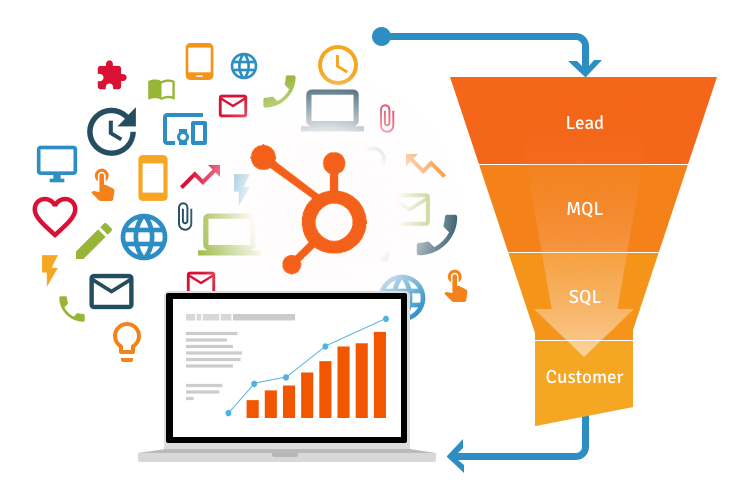How Can I Use Email Drip Campaigns to Nurture Leads and Move Them Through the Sales Funnel?
Email drip campaigns are a powerful tool for nurturing leads and advancing them through the sales funnel. By sending a series of targeted, automated emails over time, you can engage prospects with relevant content that addresses their needs and interests. Start by segmenting your leads based on their behaviors and preferences. Design a sequence of emails that provide valuable information, answer common questions, and guide them towards making a purchase decision. Use personalized messaging to build relationships and keep your brand top-of-mind. Track the performance of your emails to refine your approach and ensure that each message moves leads closer to conversion.

In the ever-evolving landscape of digital marketing, email remains a powerful tool for nurturing leads and driving conversions. One of the most effective strategies within this realm is the use of email drip campaigns. These automated sequences of emails allow businesses to engage with their audience over time, providing valuable content and insights that guide potential customers through the sales funnel. This article explores how you can leverage email drip campaigns to nurture leads effectively.
Understanding Email Drip Campaigns
Email drip campaigns consist of a series of pre-written emails sent automatically to subscribers or leads based on specific triggers or timelines. These campaigns are designed to educate, inform, and engage recipients, gradually building a relationship that encourages them to move closer to making a purchase decision. The term "drip" refers to the methodical and consistent delivery of content over time, allowing businesses to nurture leads without overwhelming them.
The Importance of Nurturing Leads
In the world of sales and marketing, leads are not created equal. Prospective customers may enter your sales funnel at various stages, and nurturing these leads is crucial for guiding them toward conversion. Nurturing helps build trust and credibility, ensuring that potential customers feel valued and understood. An effective email drip campaign can address their needs and concerns while providing relevant information, ultimately increasing the likelihood of conversion.
Key Components of a Successful Drip Campaign
Before diving into how to create an effective email drip campaign, it's essential to understand the key components that contribute to its success. These components lay the groundwork for effective lead nurturing.
Audience Segmentation
One of the first steps in creating a successful email drip campaign is audience segmentation. By dividing your audience into specific groups based on characteristics such as demographics, interests, or behaviors, you can tailor your messages to meet their unique needs. Segmentation ensures that your emails resonate with recipients, increasing engagement and improving the chances of conversion.
Personalization
Personalization is a powerful tool in email marketing. When leads feel that your messages are tailored to their specific situations, they are more likely to engage. Utilize the data you have collected to personalize subject lines, content, and calls to action. This not only makes your emails more relevant but also fosters a sense of connection with your audience.
Clear Objectives
Every drip campaign should have clear objectives. Whether your goal is to educate leads, promote a product, or encourage sign-ups for a webinar, defining your objectives will guide the content and structure of your emails. Having specific goals allows you to measure the success of your campaign and make necessary adjustments.
Content Strategy
The content you include in your drip campaign is crucial for keeping leads engaged. Consider what information would be most valuable to your audience at each stage of the sales funnel. For instance, early emails may focus on educating leads about your industry, while later emails can showcase your products or services and include testimonials or case studies.
Timing and Frequency
The timing and frequency of your emails are essential for maintaining engagement. Sending emails too frequently can overwhelm recipients, leading to higher unsubscribe rates. On the other hand, infrequent communication can cause your brand to be forgotten. Establish a schedule that allows you to remain top-of-mind while respecting your leads' inboxes.
Creating an Effective Email Drip Campaign
Now that we've outlined the key components, let's explore the steps to create an effective email drip campaign.
Define Your Goals and Objectives
Start by clearly defining your goals for the campaign. Are you looking to generate leads, educate your audience, or promote a specific product? Establishing these objectives will help you structure your campaign effectively.
Map Out the Customer Journey
Understanding your customer journey is crucial for creating relevant content at each stage of the sales funnel. Identify the key stages your leads will go through, from awareness to consideration and finally to decision-making. This mapping will help you determine the content and timing of your emails.
Segment Your Audience
As mentioned earlier, audience segmentation is vital for ensuring your emails resonate with recipients. Segment your audience based on factors such as interests, previous interactions with your brand, and demographics. This will allow you to create targeted content that speaks directly to each group's needs.
Craft Engaging Content
When writing your emails, focus on creating engaging and valuable content. Start with attention-grabbing subject lines that entice recipients to open the email. Ensure that the content is informative and relevant to the specific stage of the customer journey. Use storytelling techniques, visuals, and clear calls to action to encourage further engagement.
Design Your Emails
Email design plays a crucial role in capturing attention and maintaining engagement. Use visually appealing templates that align with your brand's identity. Ensure that your emails are mobile-friendly, as a significant portion of users access their emails on mobile devices. Incorporate images, headings, and bullet points to make the content easy to read.
Implement Automation
To make your email drip campaign efficient, implement automation tools. These tools allow you to schedule your emails based on specific triggers, such as when a lead signs up for your newsletter or downloads a resource. Automation ensures that your emails are sent promptly, keeping leads engaged without requiring manual effort.
Test and Optimize
Testing is a critical component of any successful email marketing strategy. Conduct A/B tests to evaluate different subject lines, content, and calls to action. Analyze the results to determine what resonates best with your audience and make data-driven decisions to optimize your campaign.
Monitor Performance Metrics
After launching your email drip campaign, monitor key performance metrics to assess its effectiveness. Track metrics such as open rates, click-through rates, and conversion rates to gauge the success of your campaign. Use these insights to make adjustments as needed and improve future campaigns.
Nurturing Leads Through the Sales Funnel
As your email drip campaign progresses, it is essential to keep nurturing leads through the sales funnel. Here are some strategies to effectively move leads toward conversion.
Provide Valuable Resources
Throughout the drip campaign, offer valuable resources such as eBooks, guides, or webinars that address your leads' pain points. These resources not only establish your authority in your industry but also provide leads with the information they need to make informed decisions.
Share Success Stories
Incorporate success stories or case studies in your emails to demonstrate how your product or service has benefited others. Real-life examples create trust and show leads that your offerings can deliver tangible results.
Engage with Personalized Follow-Ups
As leads engage with your emails, consider sending personalized follow-ups based on their interactions. For instance, if a lead clicks on a specific product link, send them additional information or a special offer related to that product. Personalized follow-ups enhance the nurturing process and increase the likelihood of conversion.
Encourage Social Proof
Social proof, such as testimonials and user-generated content, can significantly impact a lead's decision-making process. Incorporate social proof in your emails to reassure leads that others have had positive experiences with your brand.
Incorporate Strong Calls to Action
Each email in your drip campaign should include a clear call to action that guides leads toward the next step. Whether it's scheduling a demo, signing up for a webinar, or making a purchase, a strong call to action helps direct leads through the sales funnel.
Conclusion
Email drip campaigns are a powerful tool for nurturing leads and guiding them through the sales funnel. By understanding your audience, creating valuable content, and implementing effective strategies, you can leverage the power of email marketing to build relationships and drive conversions. As you embark on your email drip campaign journey, remember to monitor performance and make adjustments to ensure success. By doing so, you will not only nurture leads but also create a loyal customer base that supports your business for years to come.
FAQs About Using Email Drip Campaigns to Nurture Leads
What is an email drip campaign?
An email drip campaign is an automated series of emails sent to leads or subscribers based on specific triggers or timelines. It aims to nurture relationships and guide recipients through the sales funnel.
How do I segment my audience for an email drip campaign?
You can segment your audience based on demographics, interests, behaviors, or previous interactions with your brand. This allows you to tailor content to each group's specific needs.
What kind of content should I include in my drip campaign?
Include informative and valuable content such as educational resources, success stories, and promotional offers that address your leads' pain points and interests at each stage of the customer journey.
How often should I send emails in a drip campaign?
The frequency of emails in your drip campaign should balance keeping leads engaged without overwhelming them. Establish a schedule that maintains communication while respecting their inbox.
What metrics should I track to evaluate my drip campaign's success?
Key performance metrics to monitor include open rates, click-through rates, conversion rates, and unsubscribe rates. Analyzing these metrics will help you assess the effectiveness of your campaign.
How can I personalize my emails in a drip campaign?
You can personalize your emails by using the recipient's name, tailoring content to their interests or behaviors, and providing relevant resources that match their needs.
What is the role of automation in an email drip campaign?
Automation allows you to schedule and send emails based on specific triggers, ensuring timely communication with leads while reducing the manual effort required to manage the campaign.
How can I optimize my email drip campaign?
You can optimize your campaign by conducting A/B tests, analyzing performance metrics, and making data-driven adjustments to content, timing, and targeting.
How do I maintain engagement throughout the sales funnel?
To maintain engagement, provide valuable resources, share success stories, encourage social proof, and incorporate strong calls to action that guide leads toward the next step.
Get in Touch
Website – https://www.webinfomatrix.com
Mobile - +91 9212306116
Whatsapp – https://call.whatsapp.com/voice/9rqVJyqSNMhpdFkKPZGYKj
Skype – shalabh.mishra
Telegram – shalabhmishra
Email - info@webinfomatrix.com
What's Your Reaction?

















